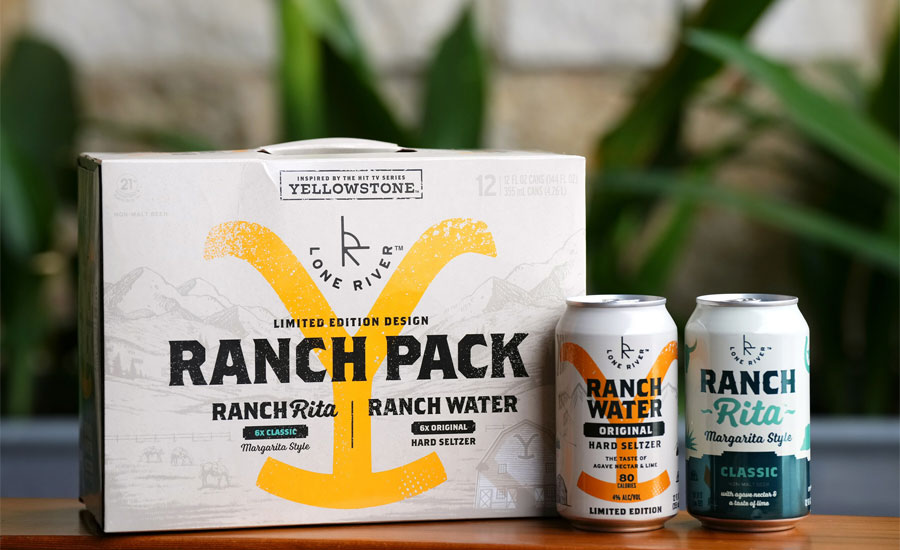Packaging Materials
Secondary beverage packaging stays on trend
Sustainability keeps secondary packaging market stable

Image courtesy of Graphic Packaging International
The British rock band Coldplay made recent headlines for its sustainability efforts on its tour, “Music of the Spheres.” The tour, which kicked off March 2022, has produced almost 50% less CO₂e (total greenhouse gases emitted as measured by the equivalent measurement of carbon dioxide) than their 2016-17 stadium tour. The band’s sustainability initiative on this tour has also diverted 66% of tour waste from landfills and planted 5 million trees. Among other sustainability aspects, power for the production of each show has been provided from electric battery systems that use 100% renewable energy.
Coldplay’s success of its sustainability initiatives shows just how important the issue has become to people.
Adriana Dale, senior marketing manager of global beverage at Atlanta-based Graphic Packaging International (GPI), explains how sustainability has influenced secondary packaging trends within the beverage industry.
“There is a clear move away from plastic shrink-film and rings in multipacks of cans and bottles,” she says. “A need to become more sustainable and reduce the reliance on plastic is driving an evolution in consumer behavior, and there is ever-increasing legislation to address this.”
Alternative materials, such as paperboard, are becoming more popular because of this trend.
“And paperboard’s inherent versatility as a material means secondary packaging is becoming much more diverse in terms of the innovative formats that are now available,” Dale notes. “Wrap and clip-style formats, basket carriers, fully enclosed cartons and more are available to meet the needs of specific bottling and canning operations.”
Additionally, Dale says that sustainability efforts have put a greater emphasis on recycled content in packaging.
“This is a key area of focus for Graphic Packaging International and our customers,” she states. “Our innovation and development process is constantly working on including recycled materials where it makes sense to do so and when we know it won’t affect the performance of the pack.”
Another trend that is influencing the beverage packaging market are those of convenience and functionality. Dale explains that consumers who are time-poor are looking for multipacks to grab and get their shopping done quickly.
“Adding a robust carrying mechanism, whether in the form of finger holes or a carrying handle, is the perfect answer to this trend,” she suggests.
Consumers also are still focusing on health and hygiene, especially in a post-pandemic era. They want to know that their product is sealed and secure, which Dale says can be accomplished with simple packaging choices like cover tops of bottles and cans.
“In addition, this trend provides lots of opportunities for differentiation through low-sugar and low- or zero-alcohol drinks, healthy beverages and functional ingredients,” she notes. “Driving differentiation of these different product ranges through innovative secondary packaging structures, formats and printed designs will also be hugely important.”

Image courtesy of Lone River Beverage Co.
Secondary packaging going forward
During the past few years, secondary packaging for the beverage market has evolved. Dale notes that the biggest change has been solutions that reduce and replace material. She says that the growing popularity of wrap and clip-style multipacks “is a testament” to such solutions.
“Innovations like KeelClip and EnviroClip clip-style multipacks not only eliminate the need for plastic rings and shrink-film on can multipacks, but they also reduce the amount of material used when compared to other multipack formats,” Dale explains. “Importantly, though, they do not impact the convenience, functionality or performance of the pack.”
She notes that consumers can “intuitively recognize” that these solutions were made with resource efficiency in mind and will positively respond to it. GPI partners with brands to understand their needs, as well as the needs of the consumer, to develop sustainable fit-for-purpose solutions, she says.
As for advice for beverage-makers, when it comes to secondary packaging, Dale suggests that they ask themselves the following questions:
- Is your packaging truly fit for purpose?
- Consider the tertiary packaging that it will be situated in, if any.
- Will a carton pack be placed into a case or a tray?
- Will it be palletized directly?
- Is it destined for a club store or a retail warehouse?
“The answers to these questions will help producers determine the optimal specification for their packaging,” Dale says. “For example, it will help determine which areas of a carton may need additional reinforcement with a higher caliper board, whether a carrying handle is necessary to facilitate removal from the tertiary packaging, what opening mechanism might be required, and so on.”
It terms of the rise of eCommerce, Dale says that beverages are not always a natural fit because of the heavy weight of beverage products. Because of this, she notes that secondary packaging has needed to be robust, lightweight and travel well.
“eCommerce has made this more important for brands using a [direct to consumer] (D2C) strategy, but this approach is much less widespread than the traditional click-and-collect at present,” Dale explains. “We do see companies starting to build eCommerce strategies into their future growth plans, however.”
But, she adds that eCommerce has impacted beverage secondary packaging in more ways than that, especially because of the pandemic. Specifically, beverage subscriptions and customizable multipacks have become more popular. In turn, packaging producers must account for these multipacks of varying sizes, Dale says.
Again, Dale points to versatile materials such as paperboard, which “lend themselves well to shorter runs of varying configurations,” especially when it comes to printing.
“Fiber-based solutions enable businesses to serve consumers with individualized packs in multiple sizes without sacrificing throughput,” she says. “This trend was one of the drivers behind our ClipCombo machinery innovation, which enables bottlers to run multiple clip-style packaging lines on the same machine.”
Looking for a reprint of this article?
From high-res PDFs to custom plaques, order your copy today!







